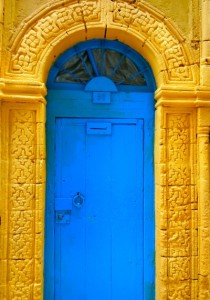Moroccan Doors of Essaouira, Your Morocco Travel Guide
The magic of Morocco is found in many places and one of them is in the hand painted doors of Essaouira. To travel inside Morocco is to visit this vast country one door at a time. Moroccan doors in Essaouira are ordained with Moorish style motifs, chamsa door knockers and painted in a variety of hues such as in Majorelle blue and canary yellow. Doors in Morocco are a gateway to another world and bare emblem of history along with the secret lives in a Moroccan home. Made of wood, metal and plaster Moroccan doors are a photographers dream as they make for the perfect subject matter.










